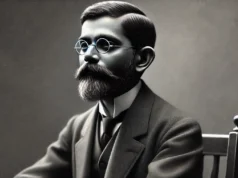
The mission of sending is unique to both the Father and the Son. God sent his Son. Jesus sends His disciples into the world to do the mission of God and demonstrate His divine love.
John 20:21 records Jesus’ most profound statement, “As the Father has sent me, I am sending you.” Jesus is the sent one of God (John 4:34; 5:24; 8:16; 9:4; 16:5; 17:3, 18).
As the sent one of God, Jesus reveals God’s glory through His death and resurrection. In this study, we focus on John 20:21 in the context of the Resurrection Narrative (John 20:1-29). The Resurrection Narrative can be subdivided into five parts.
Resurrection and the events in the early morning (John 20:1-9)
In the first part (vv. 1-9), the narrator introduces a realistic narrative by presenting – the removed stone (v.1), the empty tomb (v.1), Mary’s responses (v.2a), the disciples running to the tomb (vv.3-4), the appearance of linen strips (grave clothes) (vv.5-6), and the napkin clothes (soudarion) used to cover the face and head of the dead body (v.6-7a).
The disciples saw the burial cloth folded (v.7b). Thus, John foregrounds the tangible evidence and the eye-witness accounts to prove the historicity of Jesus’ resurrection.
Jesus’ appearance to Mary Magdalene (vv. 10-18)
In the second part (vv. 10-18), we read about Mary’s emotional responses to the empty tomb. First, she stands outside the tomb crying (v. 11a); second, she weeps as she bent over to look into the tomb (v. 11b); third, she sees two angels seated where Jesus’ body had been (v. 12); fourth, she states that she has no information regarding the whereabouts of Jesus’ body (v. 13);
Fifth, she is unable to recognize Jesus although she stood in close proximity (vv. 14, 15b); sixth, she recognizes the voice of Jesus (v. 16); and seventh, she declares that “I have seen the Lord” (v. 18). Mary accepts the reality of Jesus’ resurrection on the basis of tangible evidence.
Jesus’ appearance to the ten disciples, while Thomas is absent (vv. 19-23)
In the third part (vv. 19-23), we see the frightened disciples hiding in a closed room due to the fear of the Jews (v. 19a). Jesus came and stood among them. He said, “Peace be with you!” (vv. 19b, 21a). Further, Jesus showed the disciples His hands and His side (v. 20).

Jesus’ appearance to the disciples, while Thomas is present (vv. 24-28)
In the fourth part (vv. 24-28), the ten disciples announce to Thomas, “We have seen the Lord” (v. 25). Interestingly, Mary’s personal confession, (i.e., “I have seen the Lord” (v. 18)) becomes a community confession (v. 25).
Thomas demands “Unless I see the nail marks in his hands and put my finger where the nails were, and put my hand into his side, I will not believe.” (v. 25b). Then, Jesus appears to the disciples while Thomas is present (vv. 24-28).
Jesus invites him; “Put your finger here; see my hands. Reach out your hand and put it into my side. Stop doubting and believe.” Thomas then declares, “My Lord and my God” (v. 28).
While Mary Magdalene declared that “I have seen the Lord” (v. 18) and the ten disciples together declared that “We have seen the Lord” (v. 25). Thomas progresses one step further declaring “My Lord and my God” (v. 28).
Jesus’ pronouncement of blessing – The great Makarism (v. 29)
The disciples (Peter, the Beloved Disciple, Mary Magdalene, and Thomas) believed in the Resurrection of Jesus based on tangible and experiential evidence. In the fifth part (v. 29), Jesus declares; “Blessed are those who have not seen and yet have believed.” This possibly, is a hint to the future community of believers who will believe in the Resurrection without eye-witness accounts and tangible evidence.

The sending of the disciples
Jesus’ statement in v. 21 is missional. It can be read along with the Great Commission of the Synoptic Gospels (Matt. 28:16-20; Mk. 16:15). Through the Resurrection event, John demonstrates how Jesus sent His disciples into the world. The good news of salvation is based on tangible evidence and eye-witness testimonies and therefore, can be preached as a historically reliable and globally significant message.
The mission of sending is unique to both the Father and the Son. Jesus, as the sent One, performed signs and wonders, revealed God’s glory through His utterances and dialogues, protected the believers through the Word and the Spirit, and led the people toward the experience of eternal life.
The disciples are sent into the world to do what Jesus did. They are expected to demonstrate His divine love. While the first century apostles and missionaries are sent on the basis of evidence and testimonies, the twenty-first century disciples are sent to do the mission of God based on their faith in Jesus and love for God. In that sense, we are far more blessed than all the first century apostles as we “have not seen and yet have believed” (John 20:29).
Jesus is our Resurrected Lord. As we are sent by the Resurrected Lord, let us go and demonstrate His divine love.
Photo by Yue Su on Unsplash









